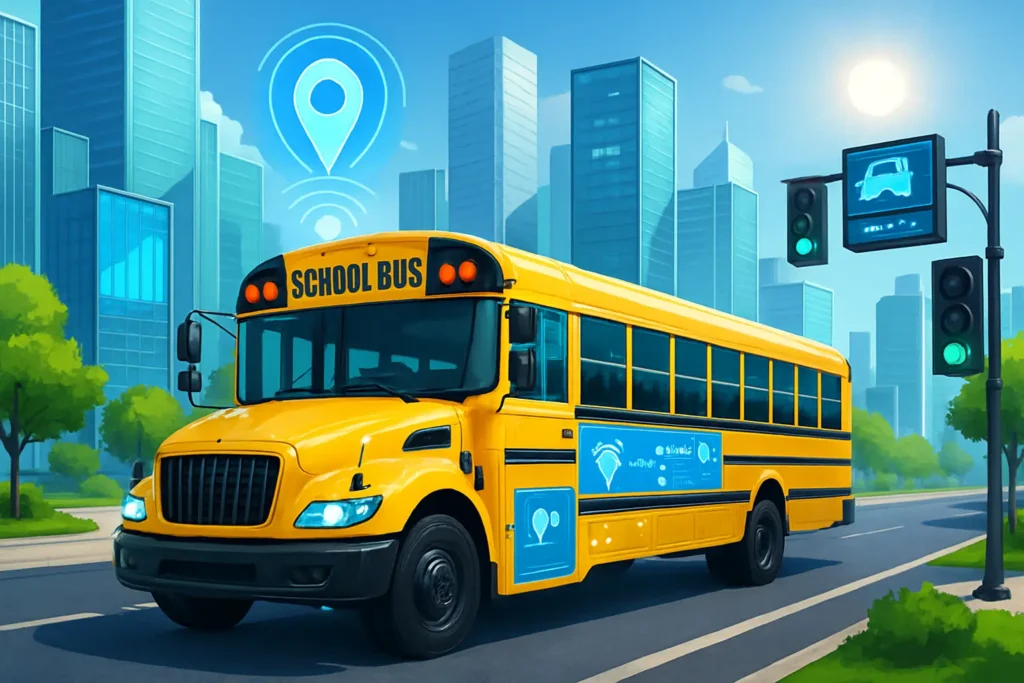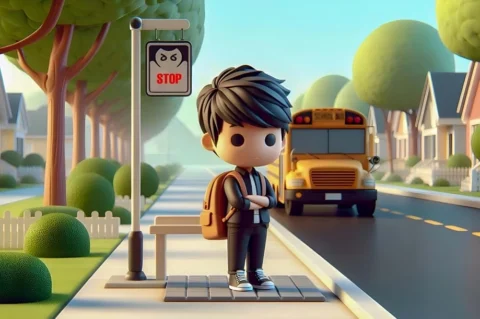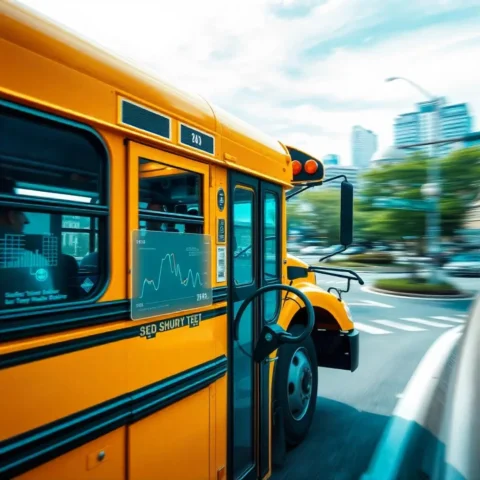The most revolutionary technologies in the quickly changing field of urban innovation frequently come from unexpected sources. While the world has been captivated by flashy autonomous vehicles and holographic street signs, the humble School Bus Tracking System has quietly revolutionized our cities in ways few futurists predicted. As we navigate through 2025’s urban renaissance, it’s becoming increasingly clear that those yellow vehicles transporting our children have become the backbone of smart city infrastructure.
The Neural Network of Neighborhoods
The modern School Bus Tracking System bears little resemblance to its primitive GPS-based ancestors from the early 2020s. Today’s systems function as distributed neural networks, collecting real-time environmental data across every neighborhood and feeding it into municipal AI hubs. What began as a safety measure for parents to monitor their children’s transportation has evolved into the most comprehensive urban sensing network ever deployed.
“We never imagined school buses would become our most valuable data collectors,” admits Tanya Reeves, Smart City Coordinator for Memphis. “The School Bus Tracking System
now provides us with block-by-block air quality readings, road condition assessments, and traffic pattern analysis that powers our entire urban management platform.”
The genius lies in the coverage: school buses traverse nearly every residential street in America daily, reaching areas that dedicated city sensors never could economically monitor.
Ambient Intelligence Through Yellow Infrastructure
The breakthrough came when municipalities began viewing the
School Bus Tracking System not as isolated transportation tech but as ambient intelligence infrastructure. The morning and afternoon routes of these vehicles create perfect opportunities for consistent data collection across different times of day.
In Seattle, their advanced School Bus Tracking System has been integrated with the city’s weather prediction models. The distributed temperature and barometric pressure sensors on buses provide hyperlocal microclimate data that has improved weather forecasting accuracy by 37% at the neighborhood level.
“We’ve installed spectrographic sensors on our buses that can detect everything from water main leaks to gas line issues beneath streets,” explains Darren Wong, Seattle’s Infrastructure Analytics Director.
“The School Bus Tracking System
essentially gives us X-ray vision of our underground utilities while performing its primary function.”
Predictive Safety Through Collective Intelligence
Perhaps most impressive is how the
School Bus Tracking System
has transformed from reactive tracking to predictive safety protocol. In Denver, the AI-powered system now reroutes buses based on predictive algorithms that incorporate real-time accident risk assessments, air quality dangers, and even social disturbance predictions.
“Last month, our School Bus Tracking System rerouted three buses away from an intersection four minutes before a major water main break occurred,” notes Denver Public Schools Transportation Director Layla Martinez. “The system had detected subtle pressure variations during previous days’ routes and triangulated the probable failure point.”
This predictive capability extends beyond physical safety. The newest generation of School Bus Tracking System technology incorporates emotional well-being sensors that monitor ambient noise levels, conversation sentiment, and even detect bullying incidents through audio pattern recognition—all while maintaining strict privacy protocols.
Carbon Intelligence Through Yellow Fleets
As cities race toward carbon neutrality goals, the humble school bus has emerged as both a solution and intelligence-gathering tool. The
School Bus Tracking System
now incorporates carbon emission tracking at the hyperlocal level, creating the most detailed emissions maps ever produced in urban environments.
Chicago has taken this approach further by deploying AI-optimized routing that continuously adjusts to minimize fuel consumption while maintaining schedule integrity. Their
School Bus Tracking System
has reduced fleet emissions by 28% while simultaneously shortening average ride times—a win-win that exemplifies smart city thinking.
“We’re now using the emission data from our School Bus Tracking System to identify and address neighborhood pollution hotspots,” explains Chicago Climate Initiative Director Marcus Johnson. “This granular data has been invaluable for environmental justice initiatives.”
The Networked Future of Yellow
As we look toward the latter half of the 2020s, the School Bus Tracking System is poised to become even more integral to urban intelligence. Experiments in vehicle-to-grid technology are allowing school bus batteries to serve as distributed energy storage during idle periods, creating resilience in municipal power systems.
Meanwhile, the data collected through these systems is training the next generation of urban AI that will manage increasingly complex city systems. What began as a way to know when your child would arrive home has evolved into perhaps the most successful distributed urban sensing network of our time.
The next time you see a yellow school bus rumbling down your street, remember: you’re not just seeing a vehicle transporting children – you’re witnessing one node in an intelligent network that’s silently transforming our cities into safer, cleaner, and more efficient places to live. The School Bus Tracking
System may have begun as a simple location tracker, but it has earned its place as the unsung hero of 2025’s smart cities movement.





